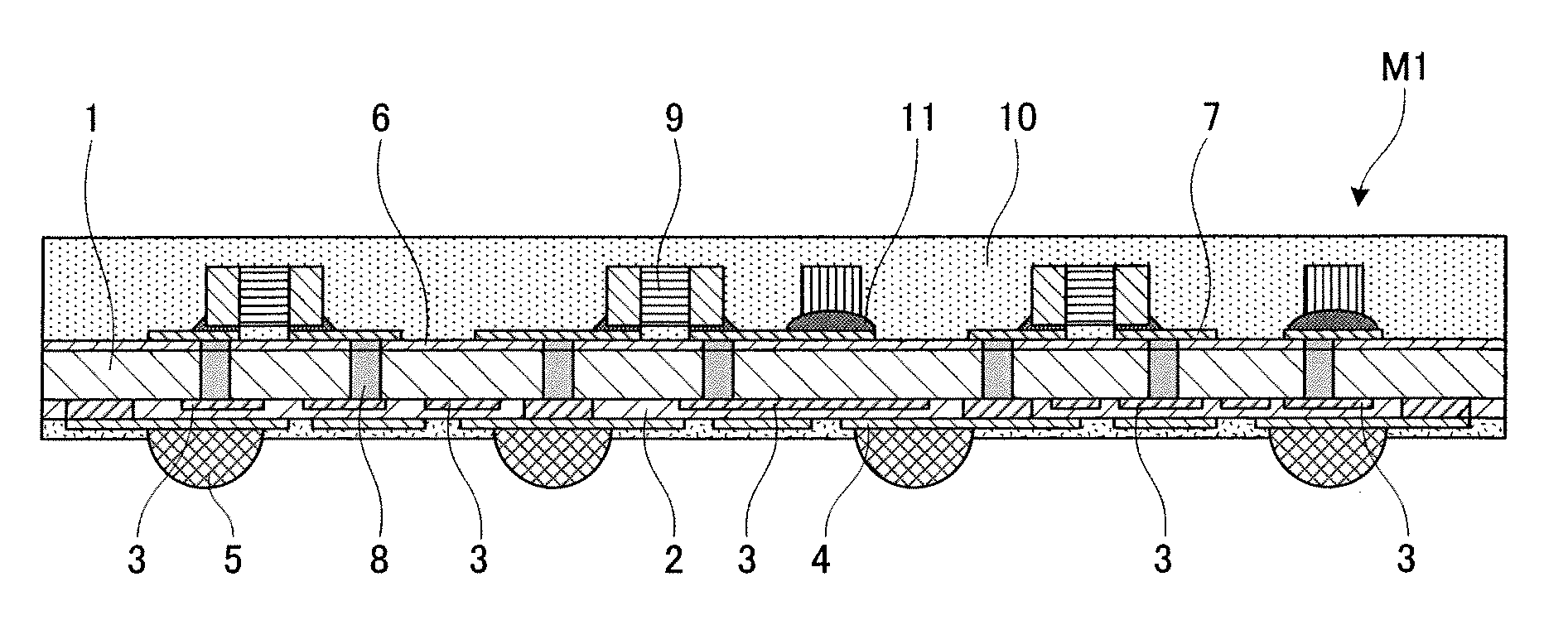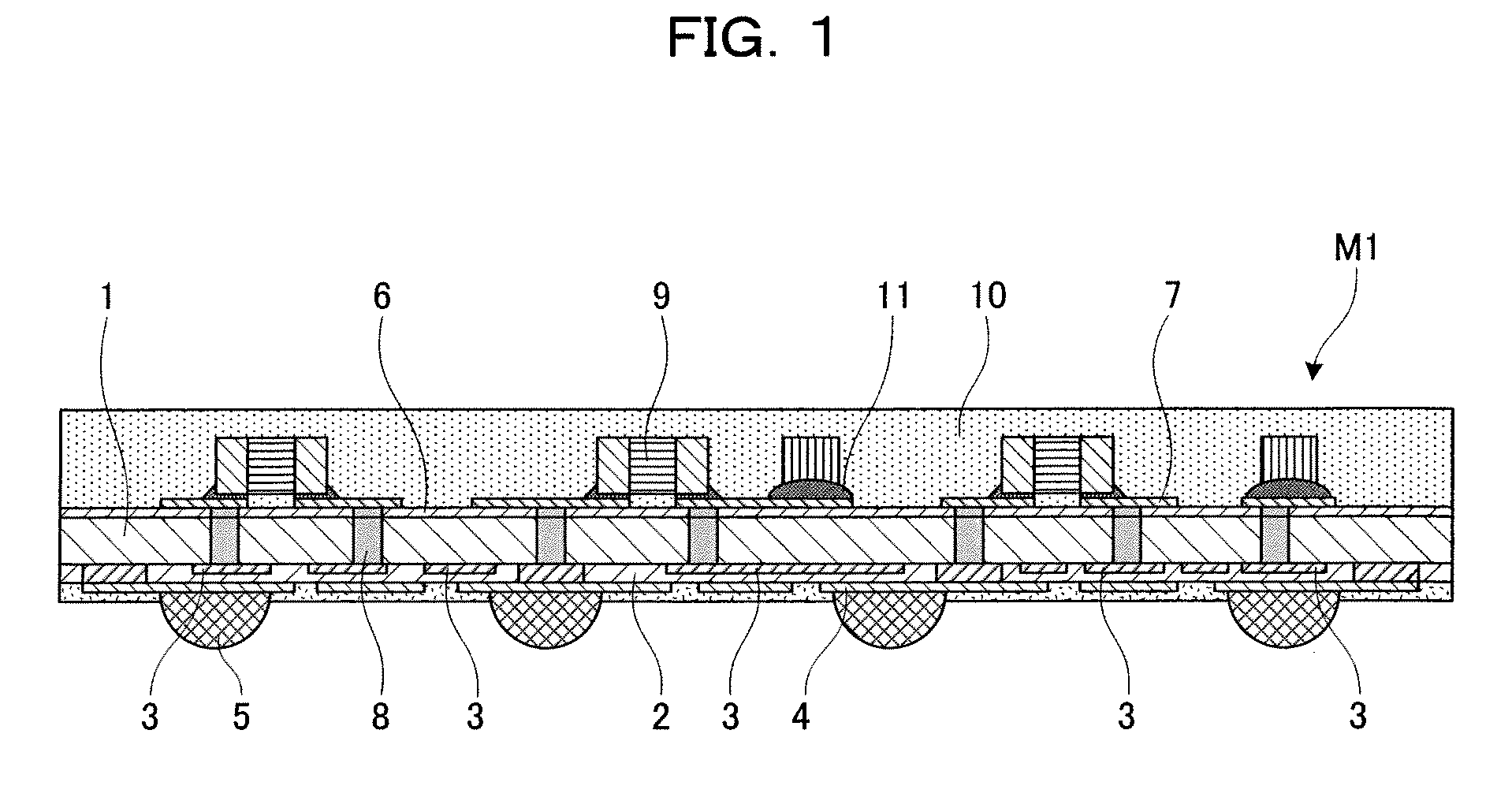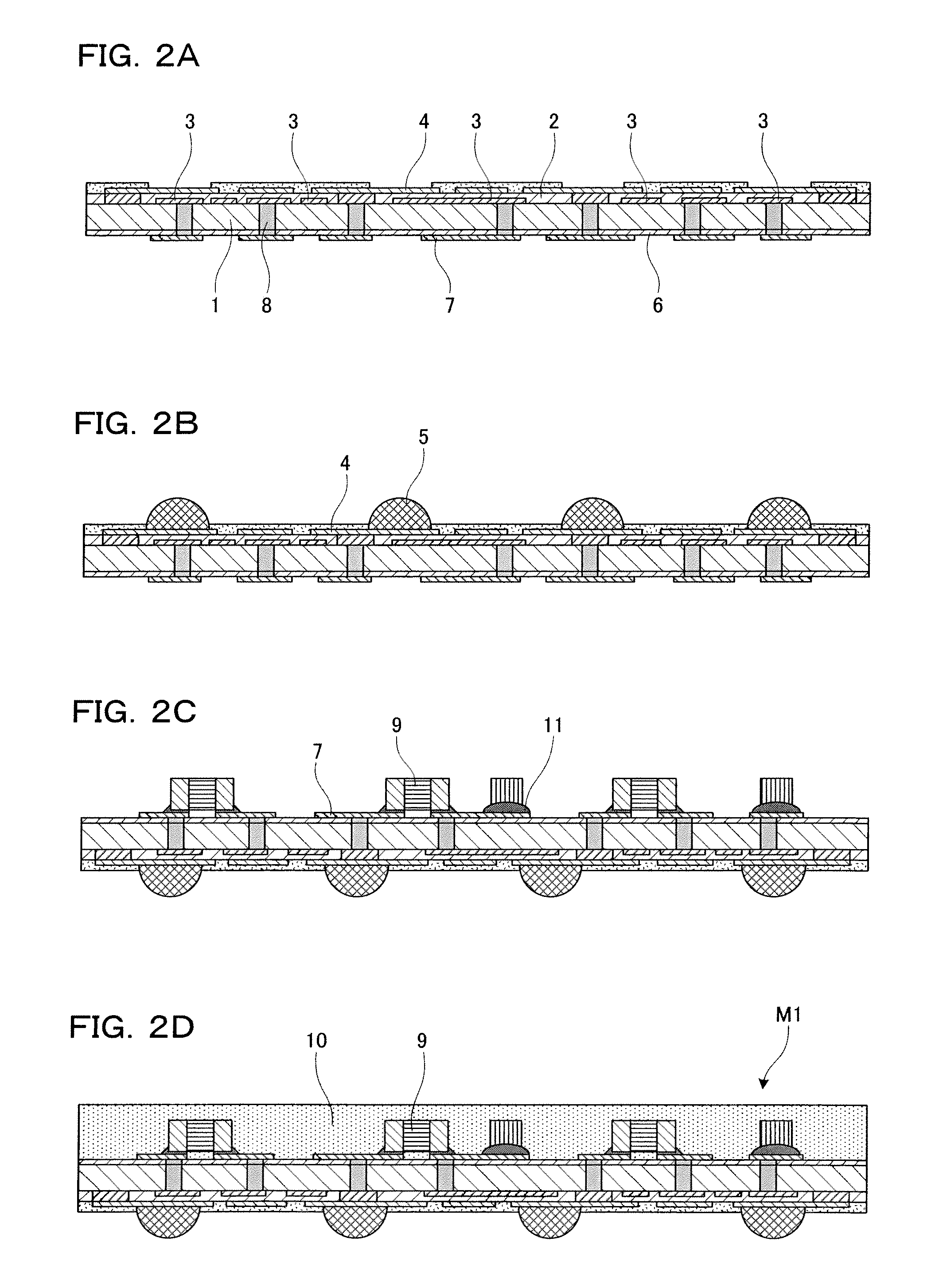Semiconductor device and method of manufacturing the same
a semiconductor device and semiconductor technology, applied in the field of semiconductor devices, can solve the problems of discharging heat from the semiconductor device, complicated configuration, operational stability of the semiconductor device, etc., and achieve the effect of reducing the length of the micro-strip line, maximizing the isolation of patterns, and reducing the cost of manufacturing
- Summary
- Abstract
- Description
- Claims
- Application Information
AI Technical Summary
Benefits of technology
Problems solved by technology
Method used
Image
Examples
first embodiment
[0066]The following will describe a semiconductor device and a method of manufacturing the same according to a first embodiment of the present invention.
[0067]FIG. 1 is a sectional view showing the configuration of the semiconductor device according to the first embodiment. The semiconductor device of the sectional view is a power amplifier module for W-CDMA of 800 MHz to 2 GHz. In the semiconductor device of FIG. 1, a power amplifier module M1 is 5 mm high by 2.5 mm wide and is 1.1 mm thick. A substrate 1 is a GaAs (gallium arsenide) wafer. On the wafer surface layer (the lower part of FIG. 1) of the substrate 1, a semiconductor element made up of a power amplifier circuit pattern 3 is formed as a first circuit pattern. The substrate 1 is 0.25 mm thick. On the power amplifier circuit pattern 3, a first insulating layer 2 is formed which is made of epoxy resin and is 0.1 mm thick. Further, copper rewiring 4 and hemispherical solder electrodes 5 for external connection are formed the...
second embodiment
[0076]The following will describe a semiconductor device and a method of manufacturing the same according to a second embodiment of the present invention.
[0077]FIG. 3 is a sectional view schematically showing the configuration of the semiconductor device according to the second embodiment. In the semiconductor device of FIG. 3, a power amplifier module M1 is 5 mm high by 2.5 mm wide and is 1.1 mm thick. A substrate 1 is a GaAs wafer. On the wafer surface layer (the lower part of FIG. 3) of the substrate 1, a semiconductor element made up of a power amplifier circuit pattern 3 is formed as a first circuit pattern. The substrate 1 is 0.25 mm thick. On the power amplifier circuit pattern 3, a first insulating layer 2 is formed which is made of epoxy resin and is 100 μm thick. Further, copper rewiring 4 and solder electrodes 5 for external connection are formed thereon.
[0078]The solder electrodes 5 are formed using hemispherical Sn—Ag solder and Sn—Ag—Cu solder. The solder electrodes 5 ...
third embodiment
[0089]The following will describe a semiconductor device and a method of manufacturing the same according to a third embodiment of the present invention.
[0090]FIG. 5 is a sectional view schematically showing the configuration of the semiconductor device according to the third embodiment of the present invention. In the semiconductor device of FIG. 5, a power amplifier module M1 is 5 mm high by 2.5 mm wide and is 1.2 mm thick. A substrate 1 is a GaAs wafer. On the wafer surface layer (the lower part of FIG. 5) of the substrate 1, a semiconductor element made up of a power amplifier circuit pattern 3 is formed as a first circuit pattern. The substrate 1 is 0.25 mm thick. On the power amplifier circuit pattern 3, a first insulating layer 2 is formed which is made of epoxy resin and is 0.1 mm thick. Further, copper rewiring 4 and hemispherical solder electrodes 5 for external connection are formed thereon.
[0091]Conventionally, Sn—Pb eutectic solder has been used for the solder electrode...
PUM
 Login to View More
Login to View More Abstract
Description
Claims
Application Information
 Login to View More
Login to View More - R&D
- Intellectual Property
- Life Sciences
- Materials
- Tech Scout
- Unparalleled Data Quality
- Higher Quality Content
- 60% Fewer Hallucinations
Browse by: Latest US Patents, China's latest patents, Technical Efficacy Thesaurus, Application Domain, Technology Topic, Popular Technical Reports.
© 2025 PatSnap. All rights reserved.Legal|Privacy policy|Modern Slavery Act Transparency Statement|Sitemap|About US| Contact US: help@patsnap.com



